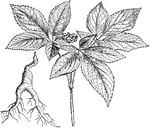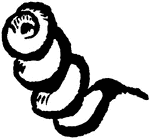
Lucerne or Alfalfa Plant
Alfalfa or Lucerne (Medicago sativa) is a flowering plant in the pea family Fabaceae cultivated as an…

Sainfoin
Sainfion (Hedysarum onobrychis), a hay, is a leguminous plant with many straggling, tapering, smooth,…
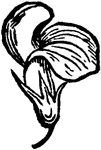
Sainfoin
Sainfion (Hedysarum onobrychis), a hay, is a leguminous plant with many straggling, tapering, smooth,…

Sainfoin
Sainfion (Hedysarum onobrychis), a hay, is a leguminous plant with many straggling, tapering, smooth,…
Timothy Grass
Timothy Grass is commonly grown for cattle feed and, in particular, as hay for horses. It is relatively…

Construction Used to Divide a Line Into Equal Parts
Illustration used to show how to divide a line into any number of equal parts by construction.
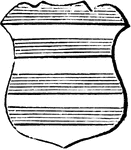
Barry Ordinary
"Barry of eight pieces, azure and argent. BARRY. A field divided transversely into several equal parts,…

Pecopteris Tree Fern
Pecopteris, frond of an ancient tree fern, was a form genus of leaves from several unrelated plant groups…
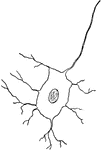
Nerve Cell
Animal nerve cells are specialized cells called neurons. Figure 1C is a nerve cell with parts of its…

Fairy-shrimp
The class of crustacea is divided into two sub-classes, Entomostraca and Malacostraca. The first, Entomostraca,…
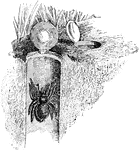
Trapdoor Spider
Spiders (order Araneae) are air-breathing chelicerate arthropods. Trapdoor spiders, of family Ctenizidae,…

Scale Insects
The scale insects are small insects of the order Hemiptera, generally classified as the superfamily…

Scale Insects
The scale insects are small insects of the order Hemiptera, generally classified as the superfamily…

Ichneumon Fly
Ichneumon flies are solitary insects, and most are parasitoids—the larvae feeding on or in another…
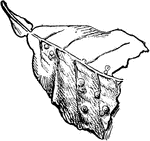
Scale Insects
The scale insects are small insects of the order Hemiptera, generally classified as the superfamily…
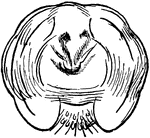
Scale Insects
The scale insects are small insects of the order Hemiptera, generally classified as the superfamily…
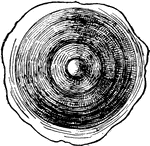
Scale Insects
The scale insects are small insects of the order Hemiptera, generally classified as the superfamily…
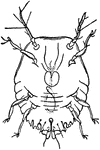
Scale Insects
The scale insects are small insects of the order Hemiptera, generally classified as the superfamily…

Scale Insects
The scale insects are small insects of the order Hemiptera, generally classified as the superfamily…

Sense of Taste
The sense of taste enables us to test in some degree the chemical constitution of substances we take…
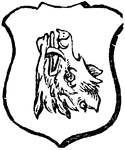
Boar's Head Erect
"Argent, a boar's head erect, and erased. ERECT. This is said of any animal or parts of animals, naturally…
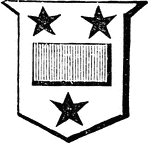
Fess Humetty
"Argent, a fess humetty gules, between three mullets sable. HUMETTY. A term used to denote an ordinary,…
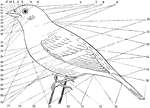
Topography of a Bird
"fig. 25 - Topography of a Bird. 1, forehead (frons). 2, lore. 3, circumocular region. 4, crown (vertex).…
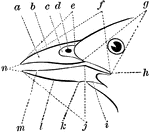
The Parts of a Bird Bill
"Fig. 26 - Parts of a Bill. a, side of upper mandible; b, culmen; c, nasal fossa; d, nostril; e(see…
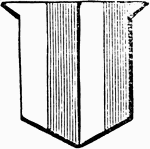
Paly
"Paly of four, argent and gules. PALY. A field divided by perpendicular lines into several equal parts…
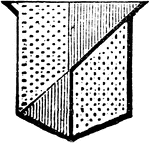
Parted Per Pale and Per Bend Sinister
"PARTED PER PALE AND PER BEND SINISTER Counterchanged, or and gules. PARTY or PARTED signifies divided,…
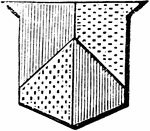
Parted Per Pale and Per Chevron
"PARTED PER PALE AND PER CHEVRON Gules and or, counter changed. PARTY or PARTED signifies divided, and…
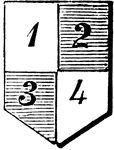
Quartered
"QUARTERED. A shield divided into four equal parts by a cross is said to be quartered. The quarter occupying…
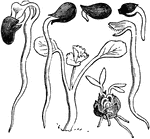
Germination
"Seeds Germinating. The central figure shows a plant which has newly appeared above ground." -Whitney,…
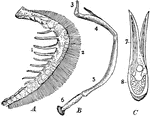
Parts of Fish Gills
"Gill of Fish. A, first branchial arch of left side of black-bass: 1, gill-rakers; 2, branchial lamellae.…

Bowman's Root
The Bowman's Root (Gillenia trifoliata) is an ornamental plant in the rose family, Rosaceae.

Ginger Plant
The Ginger plant (Zingiber officinale) is a flowering plant in the Zingiberaceae family.
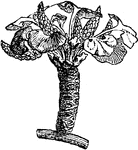
Ginkgo Biloba Branchlet
"Gingko biloba, or Salisburia adiantifolia. a, branchlet with male flowers." -Whitney, 1911
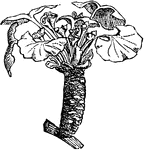
Ginkgo Biloba Branchlet
"Gingko biloba, or Salisburia adiantifolia. b, branchlet with female flowers." -Whitney, 1911
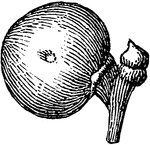
Immature Ginkgo Seed
"Gingko biloba, or Salisburia adiantifolia. c, naked seed, immature." -Whitney, 1911
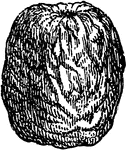
Mature Ginkgo Seed
"Gingko biloba, or Salisburia adiantifolia. d, naked seed, mature." -Whitney, 1911
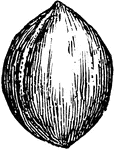
Mature Ginkgo Seed
"Gingko biloba, or Salisburia adiantifolia. e, naked seed, mature, deprived of the outer fleshy testa."…
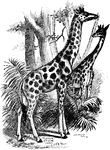
Giraffe
"The camelopard, Giraffa camelopardalis or Camelopardalis giraffa, a ruminant animal inhabiting various…
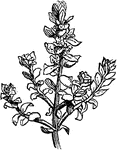
Sea Milkwort
"Flowering Branch of Glaux maritima. GLAUX. A primulaceous genus of plants, consisting of a single species,…
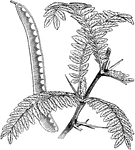
Honey Locust
"Branch and Pod of Honey-locust (Gleditschia triacanthos). GLEDITSCHIA. A genus of leguminous thorny…

Globe Flower
"Globe-flower (Trollius Europaeus). The Trollius Europaeus, a ranunculaceous plant of Great Britain…
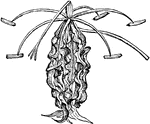
Gloriosa
"Flower of Gloriosa superba. GLORIOSA. A genus of tuberous-rooted liliaceaous plants, with opposite…
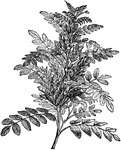
Licorice
"Glycrrhiza glabra. GLYCYRRHIZA. A plant with a sweet root, licorice, also spelled liquorice. A genus…

Gordonia
"Flower of Gordonia pubescens. GORDONIA. A ternstroemiaceous genus, of two species, very ornamental…
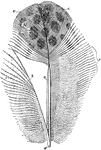
Feather from a Argus Pheasant
"Fig. 19 - A partly pennaceous, partly plumulaceous feather, from Argus pheasant; after Nitzsch. ad,…

Structure of a Feather
"Fig. - 20 - Two barbs, a, a, of a vane, bearing anterior, b, b, and posterior, c, barbules; enlarged;…
Single Barbule
"Fig. 21. -A single barbule, baring barbicels and hooklets; magnified; after Nitzsch. ...barbicels (another…

Pterylosis of Cypselus Apus
"Fig. 24. - Pterylosis of Cyoselus apus, drawn by Coues after Nitzsch; right hand upper, left hand lower,…
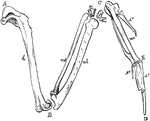
The Bones of the Right Wing of a Duck
"Fig 27. - Bones of the right wing of a duck, Clangula islandica, A, shoulder, omos; B, elbow, ancon;…
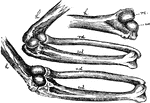
Mechanism of the Elbow-Joint
"Fig. 28. - Mechanism of elbow-joint. ..., where rc and uc show respectively the size, shape, and position…

The Wing Bones of a Young Grouse
"Fig. 29., from a young grouse (Centrocercus urophasianus, six months old), is designed to show the…
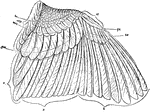
Feathers of a Sparrow's Wing
"Fig. 30., Feathers of a sparrow's wing. pc, covers of the primaries; msc, median upper secondary coverts;…
Red Shafted Woodpecker Ulna
"Fig. 31. - Ulna of Colaptes mexicanus, showing points of attachment of the secondaries. (Dr. R. W.…

Robin
"Robin: Upper parts slate-color, with a shade of olive. Head black, the eyelids and a spot before the…

Wood Thrush
"Wood Thrush. Upper parts, including the surface of the closed wings, tawny-brown, purest and deepest…

Line Divided Into Equal Parts
Illustration used to show how to divide a given straight line into any number of equal parts.
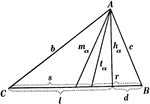
Parts Of A Triangle
Illustration used to show the various parts of a triangle: sides, angles, medians, altitudes, bisectors,…
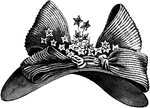
Lady's Large Hat
This lady's large hat is curved to the shape of the head with a ribbon and small plant leaves in the…

Grass Flower
"Graminae. Flower of a Grass, the glumes are removed. GRAMINAE. In botany, the largest order among endogenous…
